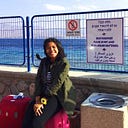How visual journalists cover the Covid-19 pandemic?
After weeks of claiming to have zero cases of the coronavirus disease 2019 (Covid-19),Indonesia officially recognized the outbreak from the first two patients on 2 March 2020. As expected, after the pandemic was confirmed, society reacts negatively and in an extreme anxiety. It must be admitted that how the media covered the outbreak has also been disrupted the handling of Covid-19.
The biggest media mistake was to publish patient’s personal data, including name, profession, and home address. The information that was obtained from the officials and without a filtering process was immediately published online. Many reporters and photographers came to the patient’s house. They took pictures and published every corner in a house. Patients personal photos and personal chats in conversation apps were published without permission.
The two patients who were being treated at the hospital claimed to be depressed not because of the Covid-19, but their personal data that has been published out of control. The scattered data makes the patients were discriminated and stigmatized. In addition, the neighbors panicked without really knowing what they should do to limit the spread of the virus.
What most media have done was violating ethical journalism. According to SPJ Code of Ethics, ethical journalism treats sources, subjects, colleagues and members of the public as human beings deserving of respect. Ethical journalist should balance the public’s need for information against potential harm or discomfort and show compassion for those who may be affected by news coverage. After patients raised objections about their widespread personal data, the officials and media is more careful in providing information to the public.
Nowadays, the information provided by the government, including cluster and patients link, is very limited. Whereas, the cluster information is very important so that people can become more alert with their own symptoms. As Dennis Muller writes, covering the coronavirus story is difficult because there are always be a dilemma between telling the truth andthe obligation not to add unjustifiably to public anxiety.
Among many interesting photos related to Covid-19, in my opinion, were taken by Paolo Miranda, a nurse who works in an intensive care room in Cremona, Italy. He takes pictures about the struggle of his colleague medics in hospital who are handling patients with Covid-19. One of his powerful photos shows two nurses who hugged each other after were declared negative Covid-19. His pictures are not only informative, but also encouraging.
— Denty Piawai Nastitie —
A Journalist based in Jakarta, Indonesia
Student of Diploma in Visual Journalism — The Asian Center for Journalism at the Ateneo de Manila University.
